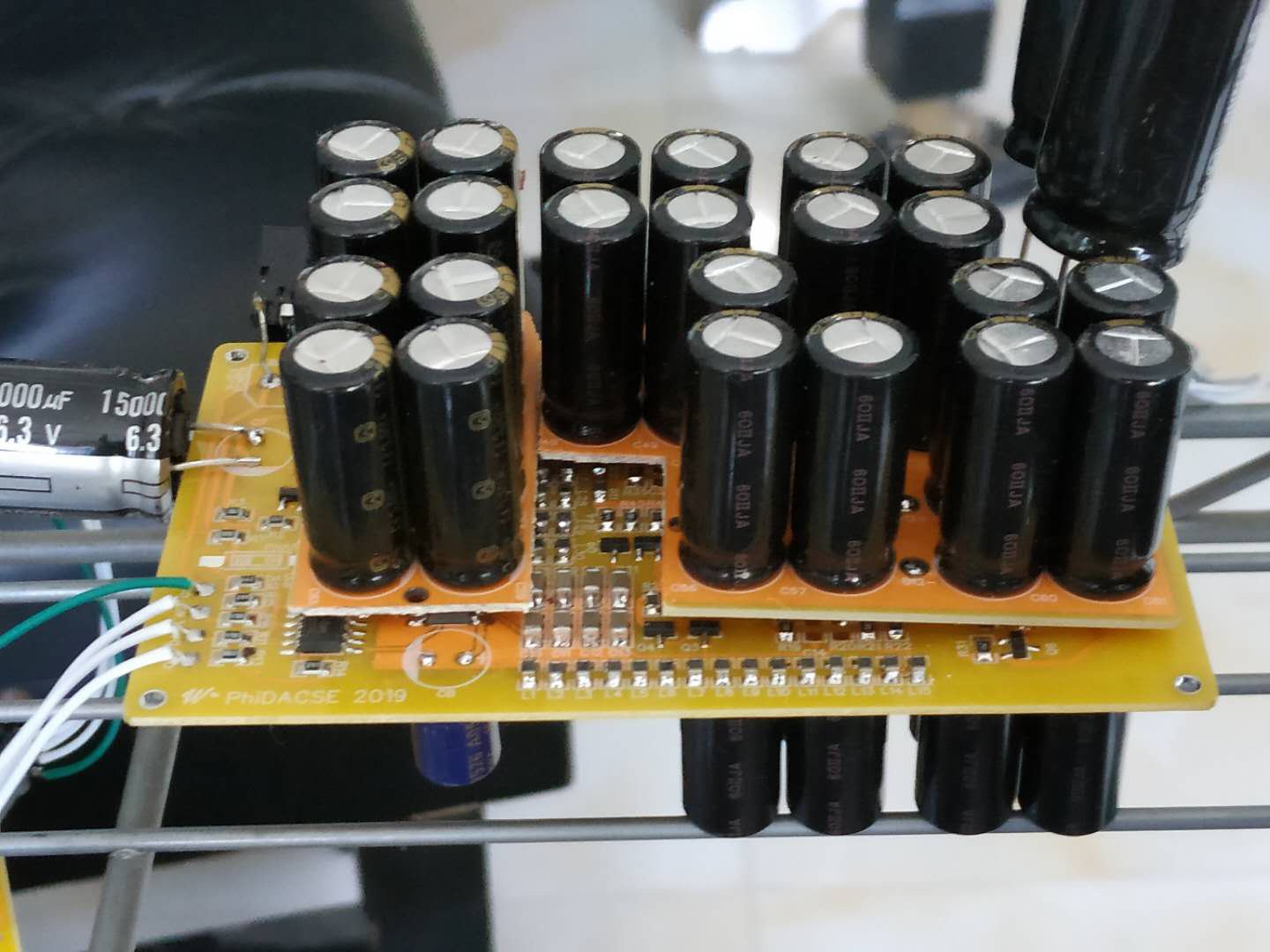A number of kit packs of PhiDAC have been made up and shipped out to interested parties. The first feedback has come from Phuong in Vietnam, he's built a PhiDAC for himself and also made one for a friend, as a gift. Phuong said that at first his friend didn't think too much of the bare PCB but all that changed when he heard the first few notes coming out of it....
I've done some experiments with improving the power supplies to the AD8017s. I've created 'hats' with extra caps on to get low impedance, right at the opamp power pins. With 6 or 8 1800uF Nichicon HZs (the lowest ESR electrolytics I've been able to find) the quality of massed vocals (I listen to quite a lot of choir music) has improved noticeably and overall dynamics are slightly better. These mods though aren't amenable to any kind of volume production nor are they likely to survive boards being shipped anywhere as they rely on soldering for both electrical and mechanical connection. So I figured I needed a more robust way to achieve the depth of power supply impedance I'm looking for.
From building up perhaps a dozen PhiDACs I've encountered almost the full variation in parameters of TDA1387s that the datasheet describes. It thus turns out that in some cases PhiDAC won't operate to spec, the DC offset will be too high and hence will clip the output before digital full-scale is reached. It seems to me the best way to solve this is include a micro which allows the DAC to self-calibrate. While I peruse various manufacturer's sites in choice of the ideal MCU for this I've gone on to develop the 'PhiDAC SE' where the extra PSU capacitors are included on an extra PCB (or three). I've also swapped the opamp from AD8017 to AD815. One reason for this change is I have a number of tubes of the latter which I'd like to put to good use. Another is that I have had some reliability issues with the recycled AD8017s - some have failed, none of the AD815s I've used (I played with them in other projects prior to this which is how I acquired a stock of them) have had an issue although I understand they too are recycled. AD815 has another advantage in that its much more flexible in its power supply requirements - in particular its upper limit is above 30V, a far cry from AD8017's 12V. The package is much larger though and this necessitates a larger PCB.
I've run into some oscillation problems with AD815 which didn't happen with AD8017 but then I'm driving headphones direct now as the AD815's superior thermals render that a practical option. Turns out the ferrite bead at the inverting input might not be the best choice. As a result of the transient oscillations and a couple of small board errors the rev1 board is undergoing re-layout and hopefully will go off for manufacture this week.
Here's one example PhiDAC SE (an extreme one) where the extra caps have been fitted both to top and bottom of the PCB. While adding one 8-cap PCB per opamp makes a significant difference, the second one may well give no additional improvement. I had to try it though :)

 Richard Dudley
Richard Dudley
Discussions
Become a Hackaday.io Member
Create an account to leave a comment. Already have an account? Log In.